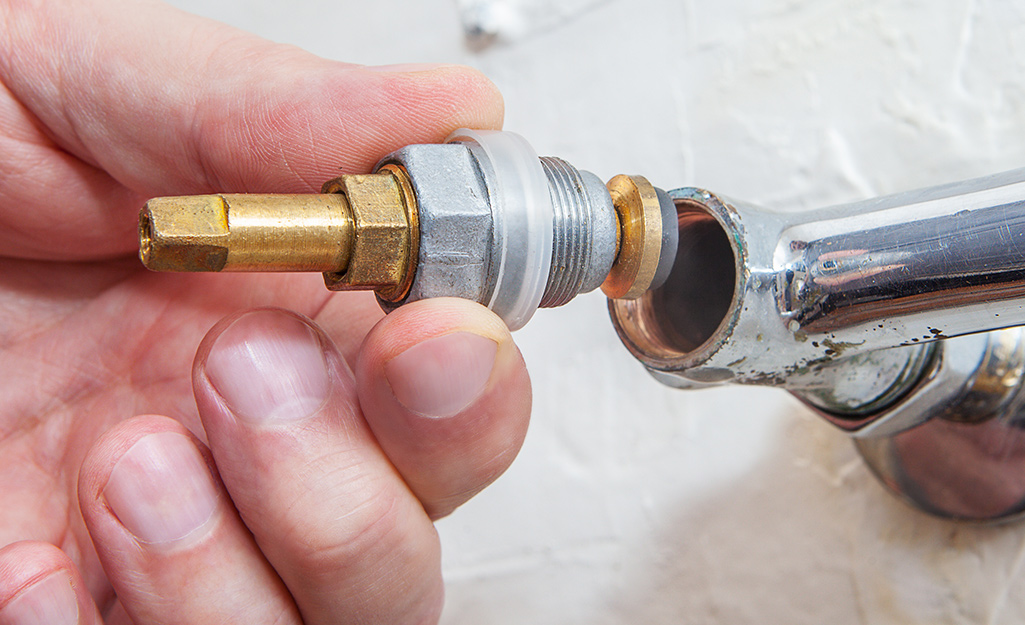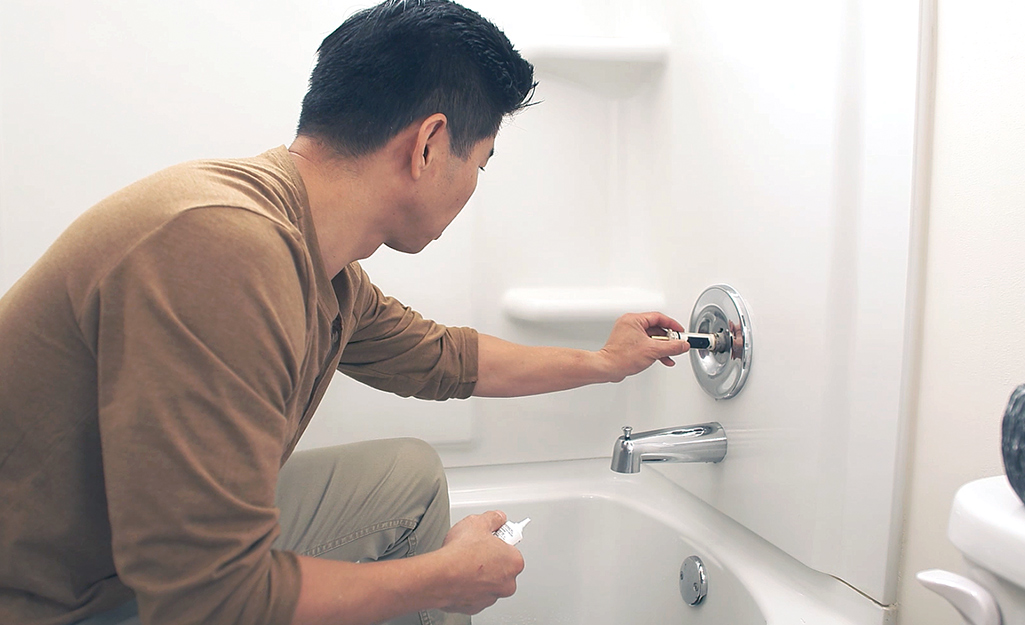Uncovering the Significance of Repairing a Leaking Faucet
BookWe have found this post involving How to Fix a Dripping or Leaky Faucet down the page on the net and concluded it made perfect sense to quickly share it with you over here.

Leaking taps could look like a small aggravation, but their effect surpasses simply the nuisance of the audio. From wasting water to incurring unnecessary monetary expenses and wellness threats, ignoring a dripping faucet can result in different repercussions. In this post, we'll explore why it's vital to resolve this typical family problem quickly and efficiently.
Waste of Water
Environmental Impact
Trickling taps contribute considerably to water wastage. According to the Environmental Protection Agency (EPA), a single tap leaking at one drip per second can throw away greater than 3,000 gallons of water per year. This not just stress water sources but additionally affects ecological communities and wildlife depending on them.
Step-by-Step Overview to Fixing a Dripping Tap
Tools Needed
Prior to attempting to take care of a trickling faucet, collect the necessary tools, including an adjustable wrench, screwdrivers, substitute components (such as washers or cartridges), and plumber's tape.
Common Tap Issues and Their Solutions
Recognize the kind of tap and the details concern causing the drip. Common problems include worn-out washing machines, rusty shutoff seats, or faulty O-rings. Refer to producer directions or on the internet tutorials for step-by-step assistance on repair services.
Financial Costs
Raised Water Costs
Beyond the ecological impact, dripping faucets can pump up water bills considerably. The gathered wastage gradually converts right into greater utility costs, which might have been prevented with prompt repairs.
Prospective Property Damage
Moreover, prolonged trickling can cause damage to components and surfaces bordering the faucet. Water buildup can cause discoloration, corrosion, and also structural problems if left ignored, leading to additional repair expenses.
Wellness Issues
Mold And Mildew and Mold Growth
The continuous visibility of moisture from a leaking tap develops an optimal atmosphere for mold and mildew and mold growth. These fungi not just endanger interior air quality but also position health and wellness threats, specifically for people with respiratory system problems or allergic reactions.
Waterborne Conditions
Stationary water in dripping taps can end up being a breeding ground for germs and various other microorganisms, enhancing the risk of waterborne diseases. Impurities such as Legionella germs flourish in stagnant water, possibly causing severe diseases when consumed or breathed in.
Do it yourself vs. Expert Repair work
Pros and Cons of Do It Yourself Repair Work
While some may try to fix a trickling faucet themselves, do it yourself repair work feature their own collection of challenges. Without appropriate knowledge and tools, DIY efforts can exacerbate the problem or bring about incomplete repair services, prolonging the issue.
Advantages of Working With a Professional Plumber
Employing a specialist plumber ensures that the underlying reason for the leaking tap is dealt with successfully. Plumbers possess the know-how and equipment to detect and repair tap issues successfully, conserving time and lessening the risk of more damage.
Ecological Responsibility
Individual Contribution to Conservation
Taking duty for taking care of leaking faucets lines up with wider efforts toward water conservation and environmental sustainability. Every individual's activities jointly make a significant effect on protecting valuable sources.
Sustainable Living Practices
By prioritizing timely repair work and embracing water-saving practices, individuals add to lasting living methods that benefit both present and future generations.
Safety nets
Regular Maintenance Tips
To avoid leaking faucets, perform regular upkeep such as cleaning aerators, inspecting for leakages, and replacing damaged parts without delay. In addition, think about installing water-saving tools or upgrading to a lot more efficient components.
Relevance of Prompt Fixes
Addressing leaking taps as soon as they're observed avoids additional water wastefulness and prospective damage, inevitably saving both water and money over time.
Effect On Property Value
Perception of Well-Maintained Property
Keeping a home in good condition, including dealing with upkeep issues like leaking taps, enhances its viewed worth and charm amongst possible purchasers or occupants.
Influence on Resale Worth
Properties with well-maintained plumbing components, consisting of faucets, command higher resale worths in the real estate market. Resolving trickling taps can add to a favorable perception during residential property examinations and arrangements.
Final thought
Dealing with a leaking faucet surpasses plain comfort; it's a crucial action toward conserving water, reducing economic prices, and safeguarding health and wellness and residential or commercial property. Whether via DIY repair services or professional support, acting to deal with leaking taps is a tiny yet impactful way to promote liable stewardship of resources and add to a healthier, much more sustainable future.
Why Are My Faucets Dripping (And Can I Fix it Myself)?
Causes of a Dripping or Leaking Faucet
Whether you’re hearing drops of water falling and hitting a sink, or noticing water ooze out from the base of the spout, you shouldn’t ignore a dripping or leaking faucet. And, the good news is, sometimes you can fix the problem yourself.
In this article, we’ll review a few common causes of dripping and leaky. We’ll also walk you through some basic ways to find the problem and handle it without calling anyone — and let you know when to call in a pro.
But, no matter what the cause, or whether you can handle it on your own, the sooner you address it, the better.
Each drip may be a tiny amount of water. But, they all add up quickly. According to the U.S. Geological Survey, one faucet losing one drop every 20 seconds — five a minute — wastes around a liter of water every day, and 173 gallons a year.
Add in more than one in your house, and it’s a lot of water to waste. So, we’ll help you get to the bottom of things quickly.
Four Reasons Your Faucet May Be Dripping
Aerator is Damaged or Unseated Valve Seat is Corroded O Ring is Loose or Worn Out Part of the Assembly is Loose Aerator is Damaged or Unseated
If you unscrew the end of your faucet, you’ll find the aerator. It’s the little stem piece with a screen on it that shuts off the water circulation.
If it’s damaged, or if it’s not sitting right, it will allow water to pass through.
Valve Seat is Corroded
Next is the valve seat, which is connected to the washer. If the washer wasn’t in place correctly, then it could have ground against the seat. Over time, this damages the valve seat.
The problem could also be corrosion: Over time, the part has worn out, and it’s now allowing water to pass through.
O Ring is Loose or Worn Out
Since the o ring is only a small rubber gasket, it’s a common reason why the faucet is dripping. You’ll find it at the base of the faucet, and it’s there to keep water from coming out where it’s not supposed to.
However, it’s common for the o ring to wear out over time. When it does, you’ll notice a drip.
Part of the Assembly is Loose
So far, we’ve looked at a few small, specific parts. But, the problem could be anywhere in the assembly if something’s out of place.
Even if a part isn’t damaged, over time, it may have become loose or dislodged. It could be the parts we mentioned, or the aerator at the tip of the faucet, the stem itself,
Can I Fix a Leaky Faucet Myself?
Depending on the problem, and how handy you are, there’s a chance you can fix a leaky faucet without calling a professional. But, you do run the risk of making the problem worse.
If it’s a small drip, you can certainly try a few troubleshooting tactics. We’ll walk you through them in a moment.
But, no matter what, your first step should be shutting off the water coming into the faucet. You should find a shutoff valve under the sink on the pipes leading to it. Turn each one clockwise until they close tightly.
Next, make sure you have the right tools for whatever you’re attempting. It’s tempting to make do with what you have. But, you need the right ones for a reason: You’re often dealing with small parts that can break if you handle them carelessly.
If you’re feeling confident, here are some places to start.
Items Near the Tip of the Faucet
A few of the parts we mentioned — particularly the valve seat and washer — are located at the tip of the faucet where the water comes out. They’re easy to access, making it a good place to start.
Check the O Ring
To check the o ring, you’ll need to take off the spout at the base. It’s easiest on kitchen sinks with long spouts, versus the smaller, bulkier base on most bathroom sinks.
Either way, this can be tricky, so do it carefully and don’t force anything. If it’s not coming right off, you’re much better off calling in a pro than possibly breaking something.
For a kitchen sink, there’s usually a nut or coupling assembly at the base of the spout. These often slide off easily without using any tools.
Once you’ve disassembled those parts, gently but forcefully twist off the spout.
Then, you can see the o rings. There should be two of the rubber gaskets on the base. If they look worn or damaged, replace them, and see if that solves the problem.

I was introduced to that report about Why Are My Faucets Dripping (And Can I Fix It Myself)? from a pal on a different blog. Make sure you set aside a second to distribute this blog posting if you enjoyed reading it. We take joy in your readership.